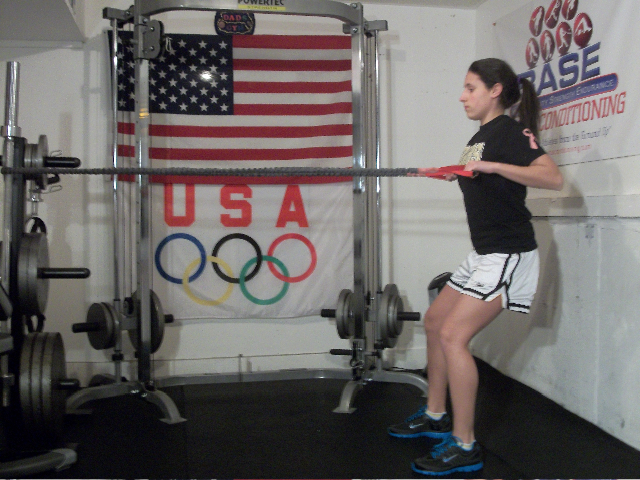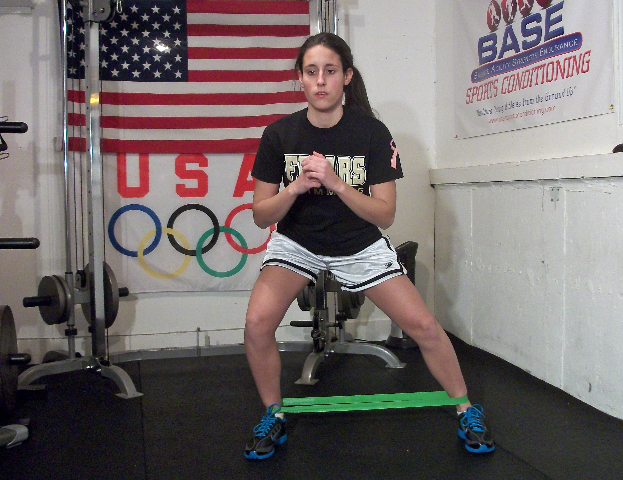As recently as a generation ago, young athletes had limited options when it came to selecting effective ways to strengthen their bodies for sports. Aside from being pointed towards the weight room, there really wasn't much a kid could do to improve things like strength, speed and power.
Lots of options
Fast forward to today and youth sports training has become something of a cottage industry; with kids now able to "train like the pros" by using a wide variety of equipment aimed at maximizing athletic potential. However, with so many choices available to them, its easy to see where kids (as well as their coaches and parents) can become confused as to which ones are best suited to developing young bodies.
In an effort to eliminate some of this confusion, I thought it would be helpful to highlight some of the various types of training equipment currently available to young athletes. Intead of rushing into weight training before they're physically ready, there's plenty kids can do these days to reduce injury risk and improve performance.
Strike up the bands
Rubber resistance bands are some of the best and most affordable training tools kids can use. Available in a variety of styles, sizes and strengths, resistance bands offer some benefits that other types of equipment can't match. For instance, because they require the user to do most drills in a standing position, resistance bands engage more muscle mass and place a heavier demand on the core than other types of strengthening equipment. They also make it possible to train at varying speeds, which is something that's not always advisable when using free weights. Not all bands are created equal though; there are several different types to choose from and all of them have lots of application to athletic conditioning.
Get a handle on it
The first and probably most popular type of bands have handles attached to the ends. They allow young athletes to execute a number of traditional strength training drills, like chest presses and rows, without some of the of worry often associated with free weights. About the only thing to be careful of is to make sure that the band is properly secured to a sturdy object (such as a staircase bannister) and that the athlete uses a resistance that he or she is able to control.

One caveat with bands that isn't true of free weights is the fact that the further the athlete moves into the range of motion - in other words, the further the bands are stretched - the more resistance they'll feel. Depending on the exercise they're doing, this often means they'll be incurring the greatest amount of resistance at or near their weakest point in the range of motion. For this reason, it's especially important that they start off with a lighter resistance until they've mastered the proper form.
The mighty mini
These harmless-looking little colored bands are enough to make the biggest, strongest athletes shake in their boots. That's because these little beauties effectively target muscles in the hips and shoulder girdle that often get the short end of stick in traditional weight room workouts. Available in a variety of resistances, the band is simply looped around the ankles, or just below the knees, or on their wrists. Used in this way, athletes will be able to stengthen muscles they probably didn't even know they had!

Big bands for big goals
If your young athlete is interested in increasing total body or "systemic" strength to develop increased speed, here's a band for that! Jump Stretch bands and Superbands are big enough for athletes to step inside of and perform drills like X walks, which are a great way to effectively link the upper body and lower body together to improve functional performance. They can also be looped around an athlete's waist, with one end attached to a sturdy object, to perform resisted running, back pedaling and side shuffling drills.
Variety and proper progression are key
As effective as band training can be, its important to understand that they're just another training tool and not the be-all-end-all when it comes to conditioning. Other training tools, such as free weights, balance devices, suspension trainers, medicine balls, kettlebells and even an athlete's own body weight, all have their place. The real key is determining which one are most appropriate, given your child's current level of physical development, and how proper integration of various training modalities can help them become a more well-rounded, well-conditioned athlete.
Youth athletics are more competitive today than ever before. Just realize that, as bad as your child or teen may want to be the best and as willing as they may be to seek out every possible advantage they can get, in the end it's all about what's right for their bodies. Don't let them rush into certain forms of training just because they look "cool". Take the time to develop an appreciation for how the strength and conditioning equipment discussed in this article, or any equipment or training technique, work and understand the potential risks and benefits before you decide whether or not they should be using them.
Mike Mejia, MS, CSCS is the president of B.A.S.E. Sports Conditioning Inc. and a frequent contributor to numerous nationally recognized magazines and websites on the subject of youth athletic development.
Posted January 16, 2012









